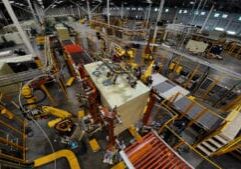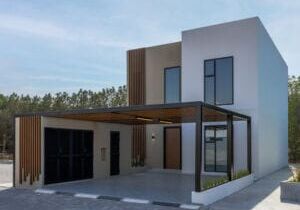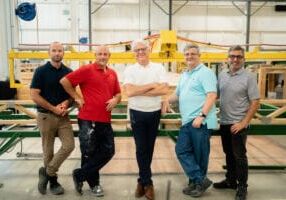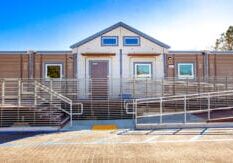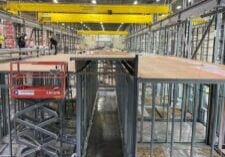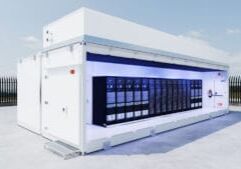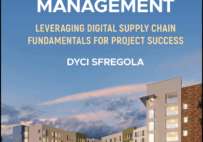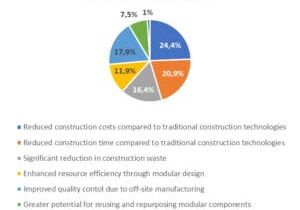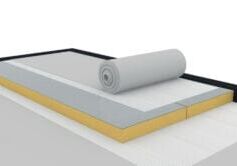Structural versus Cyclical: What Matters More?
Economic Transformation Meets the Business Cycle

Anirban Basu is the Chairman & CEO of Sage Policy Group and Chief Economist of the Modular Building Institute.
Leo Tolstoy’s acclaimed novel Anna Karenina opens with the famous line, “All happy families are alike; each unhappy family is unhappy in its own way.” Something similar can be said for the various segments that comprise the U.S. construction industry. Those segments that have dominated construction spending growth in recent years share a common feature – they benefit from dramatic economic transformations that generate a need to significantly alter the built environment. By contrast, segments that have not prospered generally have category-specific reasons for their malaise.
There are several structural transformations impacting the U.S. economy that stand to drive construction spending higher even if interest rates stay elevated for longer and the economy enters a mild recession. At the top of that list is construction related to manufacturing. For decades, supply chains were relocated from America to a bevy of nations offering lower wages, more relaxed regulatory environments, investment in supporting infrastructure, and rapidly expanding industrial workforces. The mantra among many American manufacturing CEOs appears to have been that as a profit maximizing enterprise, one must also be a cost minimizer, and minimizing costs means manufacturing beyond American boundaries.

Anirban Basu speaks at the Modular Building Institute's annual World of Modular conference.
But now a new set of considerations have induced leaders of major global manufacturing enterprises to reconsider their site selection decisions. Among these are:
- a desire for simpler logistics emphasizing shorter transit distances and times;
- a need to better protect intellectual property;
- more reliable court systems;
- incentives offered by the USMCA, America’s trade deal with Canada and Mexico; and
- a recent set of subsidies offered under packages like the Chips and Science Act and the Inflation Reduction Act.
What’s more, certain advantages offered by other nations have been diminished by time. As indicated by Deloitte analysts, labor cost pressures in the U.S. and Western Europe “are being mitigated by advances in robotics and automation.” Meanwhile, Chinese wages have been ramping higher, increasing 83 percent over the past decade.
The impact on the U.S. construction industry has been nothing short of mind-bending. Between February 2020 and November 2023, total nonresidential construction spending in America expanded 29 percent (not adjusting for inflation). Meanwhile, construction spending in the manufacturing segment grew 168 percent.
Importantly, this is not a cyclical phenomenon. In fact, by one prominent measure (the Institute for Supply Management’s Purchasing Managers Index), the U.S. manufacturing sector had been in recession for 14 consecutive months through December 2023. Nonetheless, manufacturing related construction volumes have continued to edge skyward as structural factors predominate.
Structural factors are impacting several other segments as well. Among them are data centers, driven in part by the growing pervasiveness of artificial intelligence, healthcare facilities, supported by an aging population and rising healthcare utilization, and infrastructure, promoted by an abundance of federal support spawning from legislation passed in 2021.
According to CBRE, data center supply in primary markets expanded by nearly 492 megawatts or 12 percent during the first half of 2023 compared to the latter half of 2022. On a year-over-year basis, supply expanded by 19 percent. More data centers are on the way. According to the same source, “an all-time high of 2,287.6 MW was under construction in primary markets”, representing a 25 percent year-over-year increase.
For modular builders and other industry stakeholders, these structural dynamics are of consequence, or at least they should be. For the better part of two years, contractors and others involved in interest rate sensitive economic segments have fretted about the impact of higher rates and possible recession. At the time of this writing, interest rates are still high despite expectations that the Federal Reserve will begin to loosen monetary policy later in 2024 and in 2025. Risk of recession remains. But the structural transformations transpiring in the economy signify that some construction segments stand to continue to expand even if the U.S. economy enters a period of downturn at some point this year or next.
There are, of course, some real estate and construction segments that are negatively impacted by structural changes. Among these changes are the specter of remote work, business meetings conducted on various online platforms, and e-commerce. While e-commerce has helped spawn an industrial space boom in America as Amazon and others have developed a need for additional fulfillment center space, demand for shopping center space has been compromised. During the 1980s there were around 2,500 mall locations in America. By the early parts of the current decade, that figure had declined to around 700. A Wall Street Journal article quoted expert Nick Egelanian, president of retail consulting firm Site Works, who indicated that roughly a decade from now that figure could be down to 150. Such trends have obvious implications for retail construction.
Hotels catering to business travelers have also been impacted by newly emerging behaviors. Conducting business meetings, including the delivery of economic forecast presentations, via online platforms has become far more common. While leisure travel came back with a vengeance during the pandemic recovery period, business travel did not. Not coincidentally, among nonresidential construction’s sixteen segments, no segment has experienced as much spending decline as lodging.
And then there is the office market. This is a market that has also been negatively impacted by structural changes, and tends to suffer greatly during periods of recession. Despite U.S. economic and employment growth last year, the national office vacancy rate continued to rise. As lease renewals continue over the next several years, vacancy stands to climb. There is also a debt maturity wall, meaning that many building owners will have to refinance their debt into higher interest debt during the years ahead. In many instances, building owners are likely to hand their keys over to the bank as building valuations slip below balances owed. Among other things, that will translate into more difficult project financing for office space developers.
In the final analysis, modular builders will want to align themselves with relevant economic segments that stand to benefit from structural economic shifts. There are a few of them set to create prospective opportunities for contractors to support deal flow even if the broader economy enters its next downturn at some point in the near-term.
More from Modular Advantage
Resia: Breaking All the Rules
Resia Manufacturing, a division of U.S.-based Resia, is now offering prefabricated bathroom and kitchen components to industry partners. Its hybrid fabrication facility produces more precise bathroom and kitchen components (modules) faster and at lower cost than traditional construction. Here’s how Resia Manufacturing does it.
How LINQ Modular Innovates to Bring Modular To The Market in the UAE and Beyond
LINQ Modular, with an office and three manufacturing facilities in Dubai, is a modular firm based in United Arab Emirates. The company is on a mission: to break open the housing and construction markets in the Gulf Cooperation Council (GCC) area with modular.
ModMax: Redefining Modular Construction with Confidence and Precision
ModMax was born out of frustration—frustration with five persistent pain points in modular construction: Permitting bottlenecks. Production delays. Rigid designs. Disconnect between “the office” and the field. Lack of transparency and communication.
LifeArk: Disaster-Resilient Housing from Recycled Plastic and 100-year-old Technology
Wee compares LifeArk’s housing units to Yeti coolers, as they are built similarly. Each component takes 15 to 20 minutes to manufacture, has an R-value of 40, and includes molded slots and chases for wiring, plumbing, fire sprinklers, and other utilities.
Building the Future of Modular Edge Infrastructure
The edge data center market is expanding rapidly, driven by the surge in AI workloads, IoT adoption, and the need for localized compute power. In these environments, sustainability, scalability, and reliability are non-negotiable. Cooling is among the most complex challenges for operators—and one of the most decisive factors in long-term success.
Accelerating Light-Gauge Steel Construction: A Semi-Automated Digital Workflow for Off-Site Projects
For construction professionals, the message is clear. By adopting semi-automation and digitalization, companies can deliver projects faster, more accurately, and more profitably, while also building stronger collaboration across teams. The approach is not about replacing people with machines, but about empowering people with better tools and processes.
Why Modular Data Centers Are Gaining Momentum
Artificial intelligence, high-performance computing, and edge applications push the limits of traditional “stick-built” data centers. They take years build, often struggle with high density workloads, and aren’t optimized for deployments near end users. Modular data center platforms are purpose-built to address these challenges, offering flexibility and scalability to adapt to evolving technologies, while opening new opportunities for the modular construction industry.
Supply Chain Innovation in Action: 5 Habits Every Modular Leader Should Practice
By applying these principles to supply chain practices — collaborative planning, strategic procurement, scenario modeling, digital tools, and transparent forecasting — construction leaders can build value chains that are not just efficient and agile, but truly innovative.
Exploring the Role of Modular Integrated Construction (MiC) in Advancing Circular City Principles – A Survey of Stakeholder Perspectives
The survey findings highlight the significant potential of Modular integrated Construction (MiC) in advancing the development of circular cities. By reducing costs, accelerating construction timelines, and minimizing waste generation, MiC offers a promising approach to sustainable urban development.
The Use of MS POLYMER™-Based Sealants and Adhesives in Modular Building
These products combine flexibility and elastic recovery with excellent adhesion to different substrates and have already shown their usefulness in traditional construction. Now it’s time for them to be put to use in the modular construction industry.

